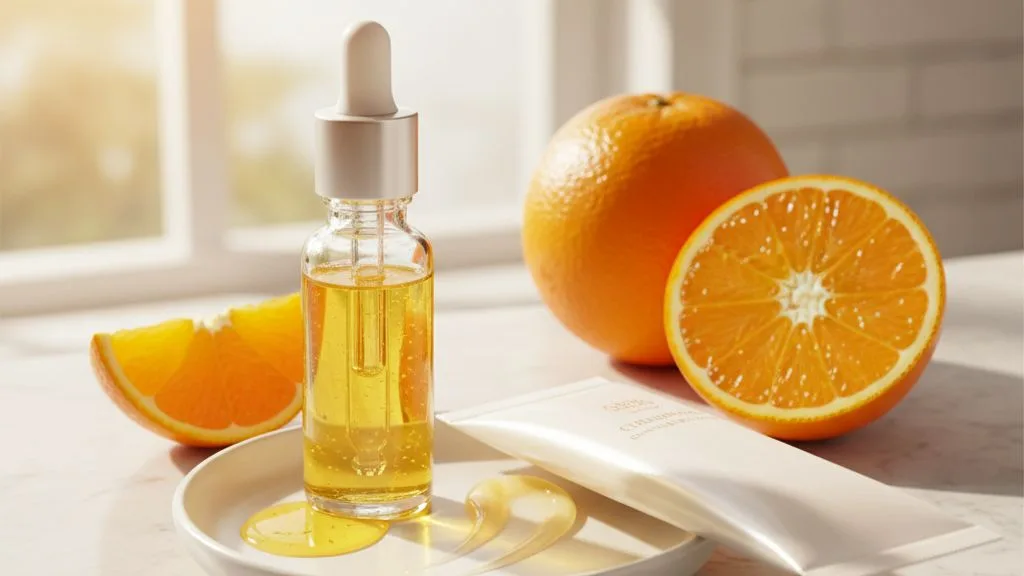You’re standing ankle-deep in water that feels like liquid glass. Your breath shortens. Your mind protests. But something deeper—instinctual, perhaps—urges you to stay. And when you emerge, flushed and trembling, you feel… lighter. Quieter. More alive. Welcome to the cult of cold plunging for stress relief—equal parts ancient rite and modern resilience training.
But is it just another wellness buzzword, or is your icy bathtub actually changing your brain chemistry, your skin, your nervous system?
We asked Neisha Arora—a multi-certified wellness expert, face yoga coach, skincare expert and medi-facial certified, and weight management and nutrition advisor—to strip away the hype and decode the ritual.
By Hale and Belle Editorial Desk | Expert Commentary by Neisha Arora
In this Article
- “Cold Plunging Doesn’t Just Cool the Body—It Resets the Mind.”
- Stress Isn’t Skin Deep—But Your Ritual Can Be
- Ritual > Reaction: Cold Therapy, the Yogic Way
- Post-Plunge Nutrition: Recovery Starts in the Gut
- The Cold, Hard Truth: It’s Not for Everyone
- Neisha’s 5-Step Cold Plunging Ritual
- Skincare Before & After Cold Plunge
- FAQs
- Takeaway from Neisha Arora
- Keep The Vibe Going
“Cold Plunging Doesn’t Just Cool the Body—It Resets the Mind.”
“The reason people feel euphoric post-plunge isn’t magic—it’s neurobiology,” Neisha begins. “Cold immersion increases norepinephrine and dopamine, often by 200–300%, according to clinical data. It downshifts the sympathetic nervous system and reactivates the parasympathetic—what we call the body’s ‘rest and digest’ state.” Research from Stanford School of Medicine shows that deliberate cold exposure can increase dopamine levels by up to 250%, enhancing focus and mood for hours post-exposure [1].
In simpler terms? That icy water forces your brain to slow down. Your breath deepens. Your nervous system—chronically fried by daily chaos—starts to recalibrate.
According to a 2025 meta-analysis published in PLOS One, cold water immersion significantly reduced psychological stress symptoms and improved overall well-being within just 7–10 sessions [2].
Stress Isn’t Skin Deep—But Your Ritual Can Be
While cold plunging is often glorified for its mental impact, Neisha sees it through a more nuanced lens—one that includes skin physiology and barrier function.
“Yes, cold plunging tightens pores, reduces puffiness, and boosts microcirculation—but you have to prep the skin,” she cautions. “Think of it as a natural cryo facial, but one that must be followed by barrier-repairing hydration. Otherwise, you’re shocking the skin without support.”
Neisha’s skincare tip? Apply a ceramide-rich serum before and a squalane or hyaluronic acid serum afterward. Avoid exfoliants or actives post-plunge when the skin barrier is vulnerable.
Also Read:
- The Squalene and Squalane Showdown
- Hyaluronic Acid vs. Polyglutamic Acid: Which One is Better for Hydration?
Ritual > Reaction: Cold Therapy, the Yogic Way
Face yoga might seem like a separate practice, but Neisha believes it makes the plunge more powerful.
“Start with facial breathwork,” she advises. “Activating the vagus nerve before entering cold water helps reduce the shock response. It’s about regulation, not resistance.”
Try this before you plunge:
- Inhale deeply for 4 counts
- Hold for 7 counts
- Exhale slowly for 8 counts
Repeat 3–5 times.
Then practice a 2-minute lymphatic face sweep—Neisha’s signature move—to stimulate drainage and help the skin respond to sudden vasoconstriction.
According to a study by the University of Ottawa, cold therapy can influence cellular signaling, supporting tissue recovery and modulating inflammatory responses [3].
Post-Plunge Nutrition: Recovery Starts in the Gut
Cold exposure triggers hormesis—a small, controlled stress that actually strengthens the body. But for that to work, the body needs proper recovery tools.
Neisha suggests a warm post-plunge smoothie rich in:
- Magnesium (to lower cortisol)
- Healthy fats (to support skin barrier and hormone balance)
- Adaptogens like ashwagandha or shatavari (to help the body adapt to stress)
Her go-to blend? “A warm smoothie made with ragi malt, almond milk, ashwagandha, banana, and a touch of ghee. It’s grounding, nourishing, and great for your nervous system,” she says.
You could also try a warm turmeric latte with nut milk and a pinch of cinnamon for an anti-inflammatory, skin-loving bonus.
The Cold, Hard Truth: It’s Not for Everyone
Let’s get clear: this ritual isn’t a one-size-fits-all.
“If you’re pregnant, have cardiovascular issues, or unmanaged thyroid conditions—skip the plunge,” Neisha warns. “And never do it alone.”
For beginners: Start with 1 minute at 15°C, and build tolerance over time. Frequency? 2–3 times per week is ideal. And always warm up with gentle movement afterward—think herbal tea and a slow stretch.
Neisha’s 5-Step Cold Plunging Ritual
| Step | What | Why |
|---|---|---|
| 1 | Breathwork + Face Yoga | Calm nervous system, prep lymph flow |
| 2 | Cold Plunge (1–3 mins) | Hormetic stress, mood elevation |
| 3 | Rewarm gently | Avoid thermal shock |
| 4 | Hydrating skincare | Restore barrier |
| 5 | Nutrition | Rebuild from within |
Skincare Before & After Cold Plunge
Pre-Plunge (Barrier Support & Soothing)
Bioderma Atoderm Intensive Baume
Ceramide-rich balm that strengthens and protects the skin barrier before cold exposure.
Dr. Sheth’s Centella & Niacinamide Serum
Gentle, calming, and barrier-repairing—great for sensitive or redness-prone skin.
Post-Plunge (Hydration & Recovery)
The Ordinary Hyaluronic Acid 2% + B5
Lightweight hydration serum to rehydrate skin post-plunge.
Earth Rhythm Phyto-Ceramide Deep Moisturizer
Restores moisture and strengthens the skin barrier after cold therapy.
Minimalist Sepicalm 3% + Oats Moisturizer
Great post-plunge moisturizer for calming irritation and locking in hydration.
Adaptogenic & Nutritional Support
Purna Gummies Ashwagandha – Wild Berry
Offers a delicious and convenient way to manage stress, enhance focus, and support overall wellness.
Plix Ultra Vitality Effervescent
Boosts post-plunge recovery with a refreshing mix of Ashwagandha, Safed Musli, and Zinc to support energy, stamina, and stress balance.
Wellbeing Nutrition Grandma’s Kadha
A warm, post-plunge herbal drink that supports immunity and digestion.
FAQs
A: Yes, cold plunging activates the parasympathetic nervous system and boosts mood-regulating neurotransmitters like dopamine and norepinephrine, helping reduce stress.
A: Start with 1–2 minutes at 10–15°C. As your tolerance builds, aim for 3–5 minutes a few times a week.
A: Yes, it boosts circulation and tightens pores—but it must be paired with hydrating skincare to avoid barrier damage.
A: Opt for magnesium-rich, warm foods or smoothies with healthy fats and adaptogens to support hormone recovery.
Takeaway from Neisha Arora

“Cold plunging isn’t about tolerating pain—it’s about building presence. When done right, it becomes a ritual of resilience, not just relief.”
Beyond the initial thrill of plunging into icy water lies a grounded wellness ritual that taps into ancient practices and modern science. Cold plunging for stress relief isn’t about chasing extremes. It’s about reconnecting with your body’s innate ability to reset, rewire, and restore.
Whether you’re navigating work stress, emotional fatigue, or skin flare-ups, this practice offers a multi-layered response: it lowers cortisol, elevates dopamine, enhances circulation, and even tones the skin. As reviewed in Experimental Physiology, cold water immersion triggers adaptive responses in the nervous and cardiovascular systems, creating long-term resilience to stress when practiced consistently, while the Stanford School of Medicine links cold exposure to a sustained rise in dopamine—your body’s feel-good chemical.
But Neisha is clear: “Don’t just copy trends. Listen to your body, build a ritual that nourishes you, and be gentle with yourself on the coldest days.”
In an overstimulated world, perhaps the most radical form of self-care is a plunge into stillness.
Recommended Read: The Ice Dunk Debate: Four Experts Weigh In on Skincare’s Coldest Trend
Want the latest scoop, exclusive deals, and skincare secrets? Follow us on WhatsApp and never miss a glow-up moment!




